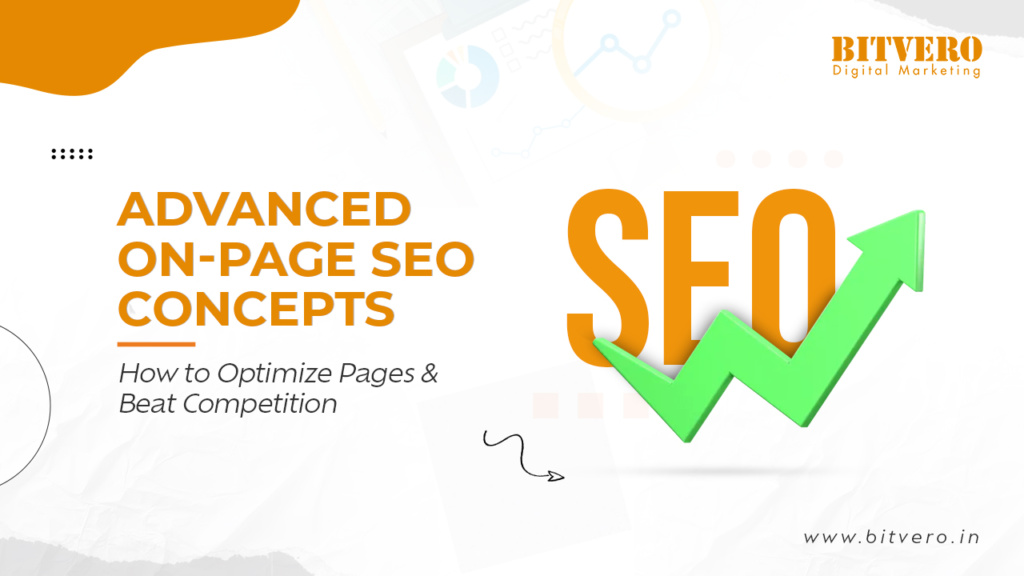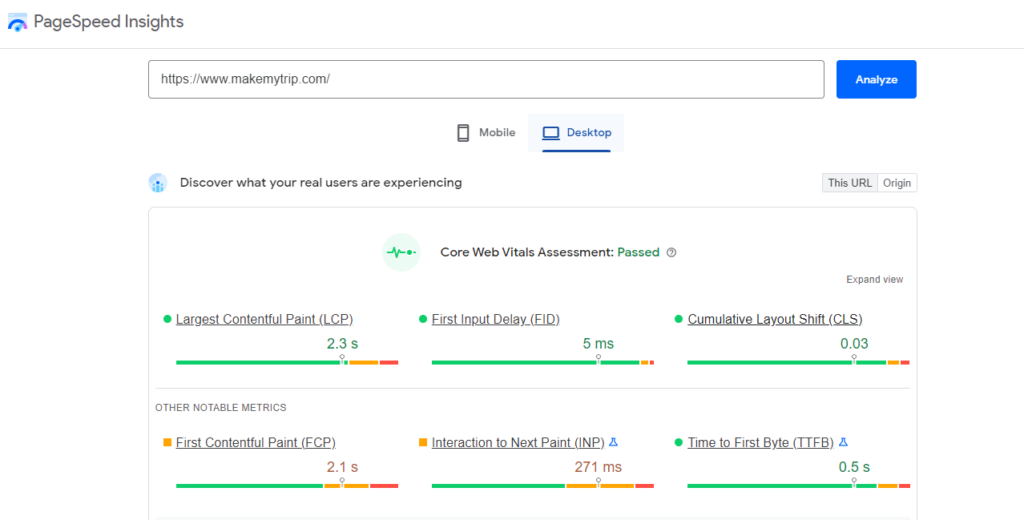Advanced On-Page SEO Concepts: How to Optimize Pages & Beat Competition
- October 16, 2024
- Digital Marketing, Website Design

On-page SEO refers to the process of optimizing a particular webpage or web content in a way that it appears on the search engine results page as SERP or ranks at the top.
Any page that becomes visible at the top of Google’s search results attracts a high number of clicks, resulting in a large amount of traffic to your website.
A variety of basic and advanced techniques are used to optimise the web page in that manner. Some of the basic methods include-
- Writing unique and plagiarism-free content.
- Using the primary and other main keywords.
- Incorporating the main keyword in the title, headings and paragraphs. Also, targeting other main keywords.
- Providing information in the form of a heading or paragraph.
- Keeping the paragraphs short and precise.
- Using bullet points, tables, images, graphs etc.
- Optimizing images by compressing them
- Inserting both internal and external links.
- Keeping URL short and keyword enriched.
- Creating a meta description.
- Keeping the length of the meta description and title sufficient.
Read also: Critical SEO Trends to Know in 2024
Advanced On-Page SEO Tactics
Once you are done with the basic SEO tactics, you need to go for some advanced on-page SEO techniques to beat the competition and bring more traffic to your website.
To learn about such techniques, go through the next section of this article.
Related article: Is your website affected by the Google penalty?
Analyze & Optimize Page Speed
Page speed is one factor that a search engine considers when ranking a webpage, and that’s why it needs to be optimised. A webpage’s speed concerns the core web vitals: the website’s loading, inactivity, and visual stability.
To check if your website is performing well on all these parameters you may use Google’s free PageSpeed Insights tool that scans the webpage and then provides a report on how well your webpage is doing.
If there are any issues with the given webpage then it highlights them and makes specific recommendations for improvement.
To use the PageSpeed Insights tool, enter the URL of the page on which you want the report and click the Analyze option.

A report will be generated that will look like the following-

It will show the performance score for both mobile and desktop versions and will indicate where the webpage is performing well and where it needs improvement.
Featured Snippet
Featured Snippets are short excerpts of content that become visible at the top of Google’s search results in return to a searcher’s search query. Feature snippets help bring more traffic to your website by ranking it in the zero position, even at the top of SERP.
There are mainly four types of feature snippets and that are-
- Paragraph feature snippet
- Video Feature Snippet
- Bulletin Feature Snippet
- Table feature snippet
How to add Featured Snippets?
To bring your content to zero position, you need to do something more than just basic SEO. For this, try optimizing the on-page content by including the above-mentioned snippets in it. However, this will work only if your content is unique and proper keywords have been included.
Paragraph Snippet
It is a highly-ranked snippet at position 0. It is basically an answer to a user’s query in the form of a short and simple definition. To add this, provide information in the form of a question-and-answer, like putting the question in the heading and then answering it in a short, precise, and keyword-enriched paragraph.

Bulletin Snippet
To add a bulletin snippet, try providing information in the form of a list of bullet points.

Table Snippet
No matter what your content is about, try explaining it using a table, as it organizes information in a manner that is easy to read and understand.

Video Snippet
Use the proper title in your YouTube videos to get them ranked at the 0 position.

Read also: How to increase conversions on your website?
Add Schema Markup
Through Schema Markup, you can help search engines understand your content. It is code that communicates with the search engine to convert important information on your website into rich snippets and show them at the very top of the search engine results page by occupying a larger space.
Adding a Schema Markup can increase clicks on your website as it highlights the most important information in a well-defined manner that usually attracts the reader. Suppose you search for events near me. The result for this search query will be shown in the following manner.

In the above example, you can see the search engine provided you results in the form of a rich snippet along with other important information such as date and address.
Apart from events, other common types of schema markup include reviews, products, people, and local businesses. In simple words, Schema Markup is code that presents your content in a well-defined structure that can be understood easily.
To add Schema Markup you may install a plugin on your WordPress site or else you can do it manually by inserting the code into your HTML document.
To add manually, you will have to generate a schema markup code and then put the same in the <head> section of your HTML document. You can generate this code from Structured Data Markup Helper. To generate code, follow the steps given below-
- Choose the data type, enter the URL address of the webpage and then click on start tagging.

- The tool will load your page so you can start marking it up. Highlight the part of your content you want to mark, then choose the tag you want to give it. For e.g., author, name image, etc.
- Once you have selected the tags, hit the Create HTML
- Select the code language JSON-LD (recommended or microdata).

- Now copy the code and paste it into your HTML document’s <head> section.
Warning: Do not do these 3 things with your website!
Update Old Content
Last but not least, you need to keep updating the old content on your website to provide readers with the latest information. There are a few things that you can do to update old content for SEO.
The first thing you can do is add new links to the content. Adding new links helps search engine crawlers find your website and index it faster.
You can also add new keywords or synonyms of existing keywords in the article. This will help people find your article when they search for those keywords in Google.
Lastly, you should ensure that the title and meta description are up to date with the latest information on your website or blog post so that people know what they are reading before clicking on it.
That’s it!
We hope the above-mentioned advanced SEO tips help your website rank higher in search rankings. If you are looking for an expert SEO agency to help you with website optimisation, you can contact us. Thank you!
A team of digital marketing professionals who know the Art of making customers fall in LOVE with your brand!
